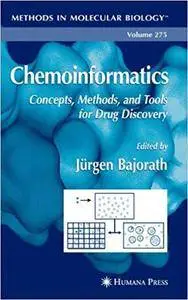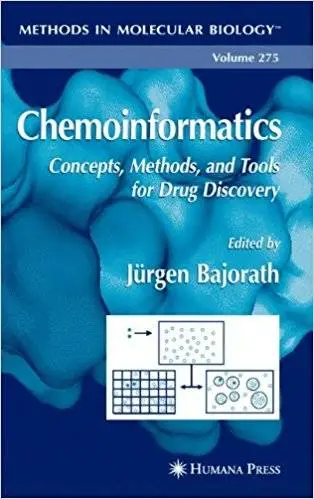Jürgen Bajorath, "Chemoinformatics: Concepts, Methods, and Tools for Drug Discovery"
2004 | pages: 538 | ISBN: 1588292614 | PDF | 7,9 mb
2004 | pages: 538 | ISBN: 1588292614 | PDF | 7,9 mb
In the literature, several terms are used synonymously to name the topic of this book: chem-, chemi-, or chemo-informatics. A widely recognized de- nition of this discipline is the one by Frank Brown from 1998 (1) who defined chemoinformatics as the combination of “all the information resources that a scientist needs to optimize the properties of a ligand to become a drug. ” In Brown’s definition, two aspects play a fundamentally important role: de- sion support by computational means and drug discovery, which distinguishes it from the term “chemical informatics” that was introduced at least ten years earlier and described as the application of information technology to ch- istry (not with a specific focus on drug discovery). In addition, there is of course “chemometrics,” which is generally understood as the application of statistical methods to chemical data and the derivation of relevant statistical models and descriptors (2). The pharmaceutical focus of many developments and efforts in this area―and the current popularity of gene-to-drug or si- lar paradigms―is further reflected by the recent introduction of such terms as “discovery informatics” (3), which takes into account that gaining kno- edge from chemical data alone is not sufficient to be ultimately successful in drug discovery. Such insights are well in accord with other views that the boundaries between bio- and chemoinformatics are fluid and that these d- ciplines should be closely combined or merged to significantly impact b- technology or pharmaceutical research (4).
My Link



